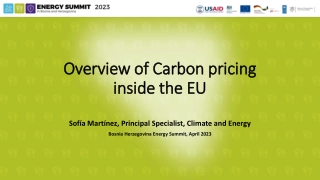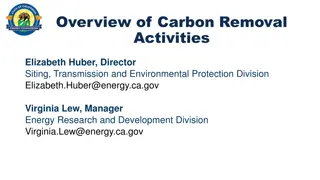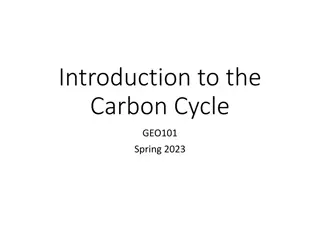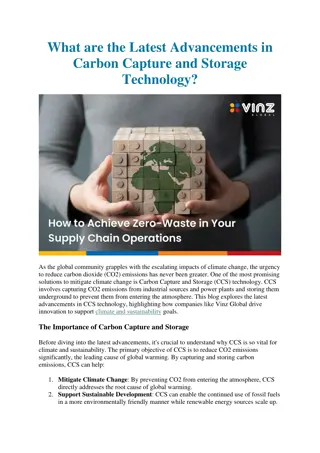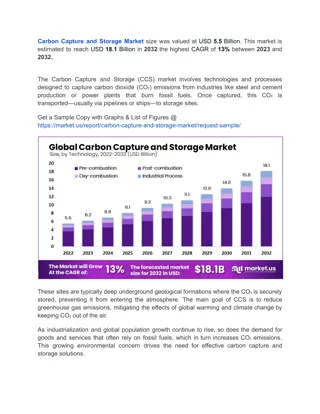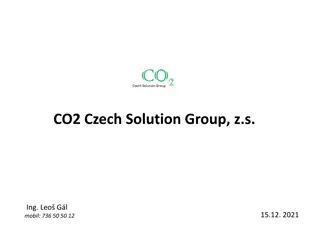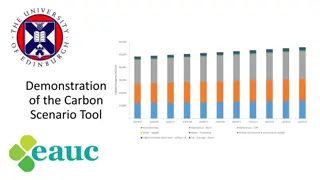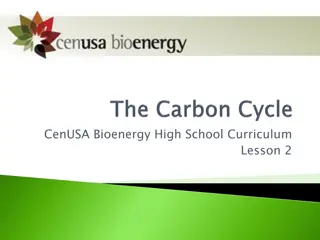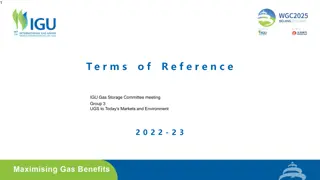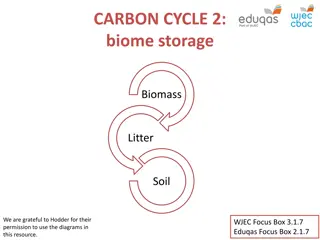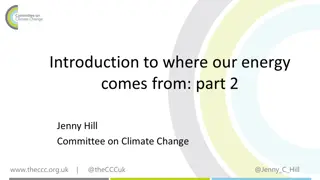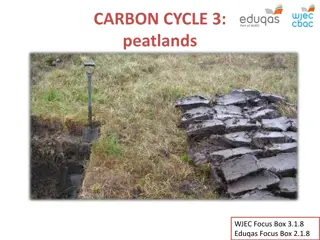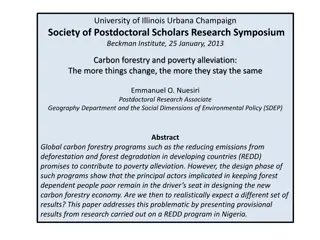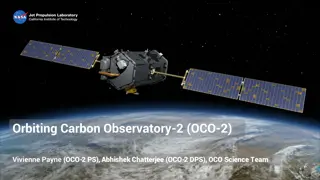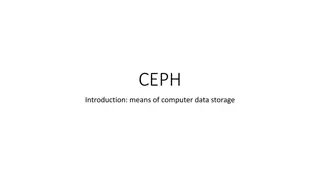Recent Developments in Carbon Capture, Utilization, and Storage
Countries worldwide are updating their legislation on carbon capture and storage, with significant developments in implementing Pillar Two tax initiatives. The timeline for these changes varies, with public consultations and draft laws being key components. Stay informed with the latest updates on this critical environmental topic.
Uploaded on Feb 18, 2025 | 0 Views
Download Presentation

Please find below an Image/Link to download the presentation.
The content on the website is provided AS IS for your information and personal use only. It may not be sold, licensed, or shared on other websites without obtaining consent from the author.If you encounter any issues during the download, it is possible that the publisher has removed the file from their server.
You are allowed to download the files provided on this website for personal or commercial use, subject to the condition that they are used lawfully. All files are the property of their respective owners.
The content on the website is provided AS IS for your information and personal use only. It may not be sold, licensed, or shared on other websites without obtaining consent from the author.
E N D
Presentation Transcript
CPTS Fall Lecture Series Pillar 2 and Carbon Capture, Utilization and Storage Alexandra MacLean, Priya Kohli and Anne Shum International, Large Business Division (ILBD) October 5th, 2022
Pillar Two CRA Perspectives Budget 2022 included a consultation on the Government s plans to implement Pillar Two, along with a domestic minimum top-up tax that would apply to Canadian entities of MNEs that are within the scope of Pillar Two. Budget 2022 indicated that the government anticipates that draft implementing legislation would be publicly released for consultation and the IIR and domestic minimum top-up tax would come into effect in 2023 as of a date to be fixed. The UTPR would come into effect no earlier than 2024. Given these anticipated timelines, the CRA has initiated planning activities in relation to the development of administrative aspects of implementation. Work at the OECD is ongoing on the Implementation Framework and Canada is actively engaged in many key groups. 2
Pillar Two Recent Developments Many countries have launched public consultations and/or released draft legislation(Pillar Two). Jurisdiction Part of Inclusive Framework (Oct 2021 agreement) Yes Consultation Draft legislation Rules in force (tentative) Other comments Yes No IIR 2023, UTPR 2024 Public consultation closed on July 7, 2022 Canada Yes Yes No Yes No Yes Passed Inflation Reduction Act Public consultation closed on Sep 14, 2022 US UK December 31, 2023 Yes Yes Yes Yes Yes Yes Yes Yes Yes Yes Yes No No No No No Yes Yes Yes Yes No No No No No No No Yes No No Public comments are requested by November 1, 2022 Issued a joint statement on September 9, 2022 Australia France Germany Italy Netherlands Spain Ireland Switzerland Jersey New Zealand 2023 End of 2023 January 1, 2024 January 1, 2024 IIR 2023, UTPR 2024 January 1, 2024 Public consultation closed on July 22, 2022 Public consultation to close on Nov 17, 2022 Public consultation closed on June 30, 2022 Public consultation closed on July 1, 2022 Yes No Yes Korean Ministry of Strategy and Finance announced, on July 21, the introduction of draft domestic legislation for a global minimum tax. Public consultation closed on August 15, 2022 Hong Kong delays implementation of OECD Pillar Two rules including the IIR to 2024 at the earliest On Sep 2, 2022, Ministry of Economy, Trade, and Industry (METI) published the report (in Japanese only) issued by the Study Group on the Global Minimum Tax and CFC Regime. Korea Yes Yes Yes No No No 2023 2024 Malaysia Hong Kong Yes No No Japan 3
Carbon Capture, Utilization and Storage (CCUS) Industry Specialist Services Draft Legislation Carbon Capture, Utilization & Storage Investment Tax Credits section 127.44 4
Timeline Consultation Period for the draft legislation ended September 30, 2022 Often a second budget bill is tabled in the fall. If passed, legislation is retroactive to January 1, 2022 and applying to qualifying expenditures incurred on or after that date and before 2041. 5
Application Process Administered by Natural Resources Canada NRCan Reference # Webpage and the on-line pre-application are expected to be available in the near future 6
Specified Percentage ITC Rate (2022-2030) 60% ITC Rate (2031-2040) 30% Qualified carbon capture directly from ambient air Qualified carbon capture in any other case For all other types of qualified CCUS expenditures qualified carbon transportation expenditures qualified carbon storage expenditures qualified carbon use expenditures 50% 25% 37 % 18 % 7
New CCA Classes Class 57 Description Rate 8% equipment (including monitoring or control equipment) that is to be used solely for capturing carbon dioxide, for transporting captured carbon or for storage of captured carbon in a geological formation 58 20% equipment that is used solely for using carbon dioxide in industrial production 59 100% any expense for the purpose of determining the existence, location, extent or quality of a geological formation to permanently store captured carbon in Canada, including such an expense that is a geological, geophysical or geochemical expense 60 30% any expenditure incurred by a taxpayer in drilling, converting or completing a well in Canada for the permanent storage of captured carbon 8
CCUS ITC Other Features Recovery Mechanism Extraordinary Circumstances and Shutdowns Climate Risk Disclosure (penalty < of 4% cumulative ITC or $1m /year) Knowledge Sharing (penalty: $2m per report not produced) 9
ILBD Priorities Building and maintaining technical capacity Enhancing our risk assessment capabilities Improving audit quality and sustainability of audit adjustments Reducing audit & file resolution timelines 10
Communication with Taxpayers MS Teams Email CRA Portal Secure Drop Zone 11
Questions? 12



